Samsung Galaxy Z Flip 7 review: flipping off the competition
I've used Samsung's full-screen flip phone for a working week – and it's a major upgrade

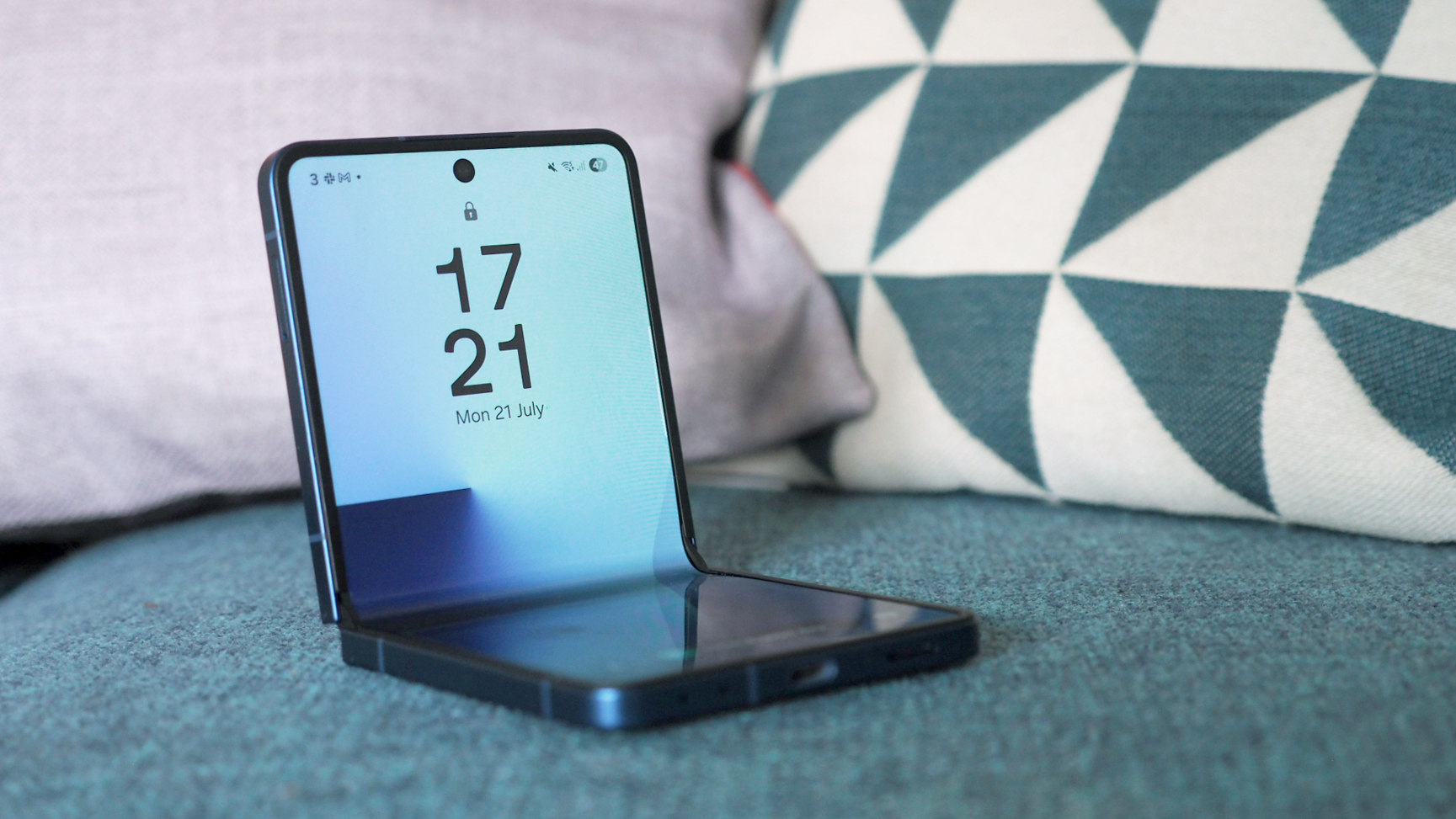
The Galaxy Z Flip 7 represents a seismic shift in Samsung's hardware development for its flip phone flagship. That all-encompassing Flex Window exterior display looks an absolute dream, although its app-limited use means it isn't always all that practical. Whether you find the folding internal panel's reflective coating bothersome may also determine whether this is the phone for you. As flip phones go, however, Samsung's re-engineering of every aspect of this handset is exactly what was needed to assert its dominance in this market.
-
+
Huge new 'Flex Window' cover display looks a total dream
-
+
Battery capacity increase over last-gen model
-
+
Great folding design and satisfying motion
-
-
Software doesn't really make fullest use of the Flex Window's new scale
-
-
Raised hinge area can disrupt gestures when unfolded
-
-
Fingerprint smears and reflections on main display
Why you can trust T3
I've been following the evolution of the modern flip phone with keen interest. Ever since Motorola reimagined its classic Razr – a launch event which I attended back in 2018 – we've had Samsung hot on its heels with its Galaxy Z Flip line.
Seven years into the making, Samsung's Z Flip 7 is no cursory upgrade. This is a seismic shift for the series, one that I've long been hoping would become reality, thanks to a now full-screen cover display, called the 'Flex Window' design. How about that for flipping off its biggest competition?
Having used Samsung's other best folding phone extensively, the book-style Galaxy Z Fold 7, it's clear that 2025 is big business for the Korean phone-maker when it comes to foldables. But while the Z Flip 7 asserts its hardware progress, how does that translate into everyday use?
Price & Availability
The Samsung Galaxy Z Flip 7 is available right now – in your choice of Blue Shadow, Coral Red, Jet Black, or the exclusive Samsung.com Mint variant – starting at £1049 / $1099 / €1199 / AU$1799. Check out the best contract offers here.
That's the same price year on year in all regions, so despite implementing a much larger cover display and re-engineering the product throughout, the Z Flip 7 doesn't cost a penny more than the Z Flip 6.
What's New?
- All-new 'Flex Window' cover display is 4.1-inches (up from 3.4in)
- Larger battery capacity, at 4300mAh (up from 4000mAh)
- Larger main display, at 6.9-inches (up from 6.7in)
- 120Hz refresh now supported on both screens
- Re-engineered design with smaller bezels
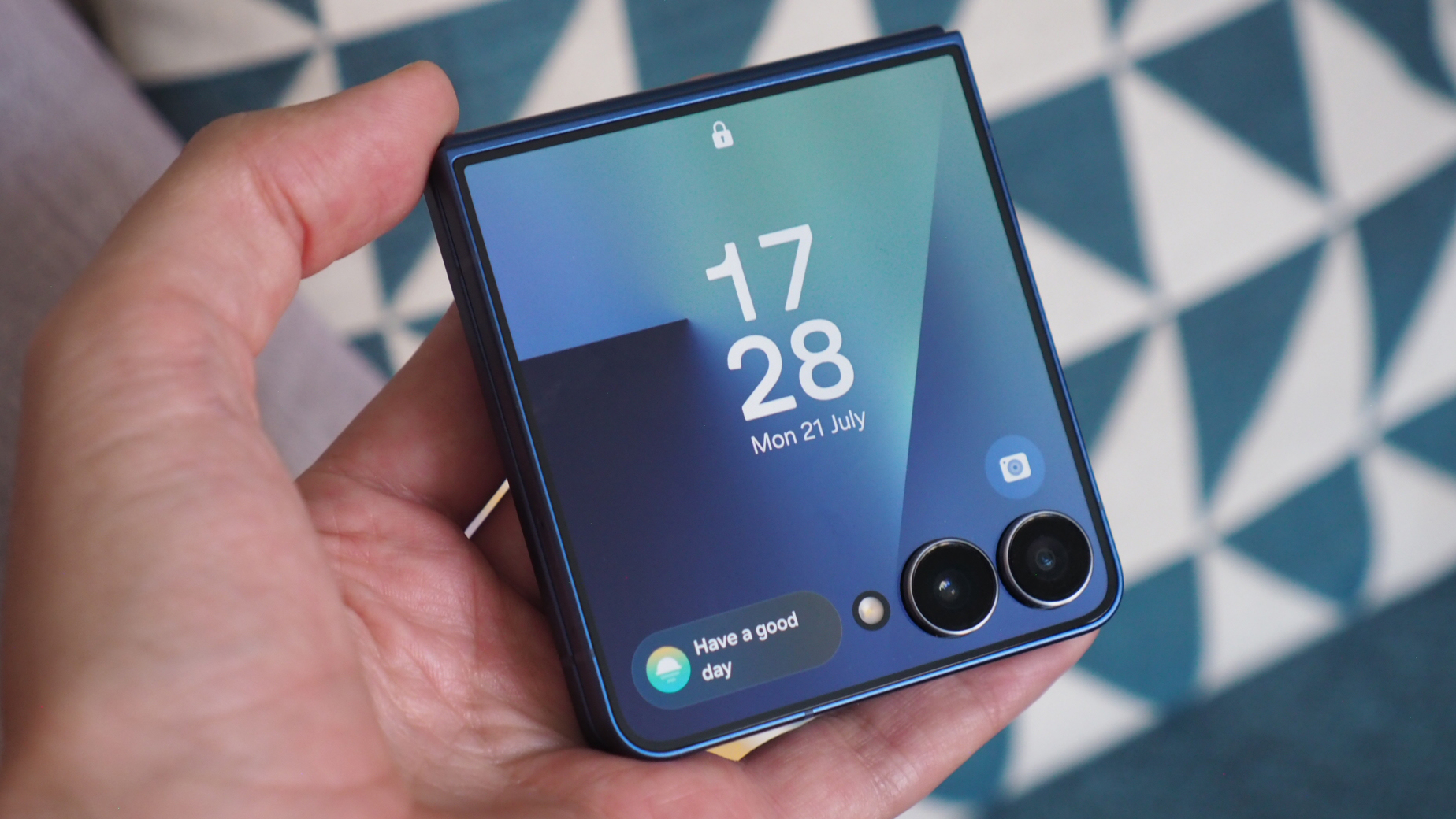
In its folded form, with the display off, the Z Flip 7 doesn't necessarily look immediately different to its predecessor. Activate that exterior 'Flex Window' through touch or button-pressing, however, and the change is immediately obvious.
The now 4.1-inch panel effectively covers the entirety of the front, even expanding beyond the duo of cameras. More than just scale, however, Samsung's re-engineering means even smaller bezels this time around, for a maximal, all-encompassing view.
Get all the latest news, reviews, deals and buying guides on gorgeous tech, home and active products from the T3 experts
The panel is more advanced, too, with greater brightness and 120Hz refresh rate support, making it altogether more flagship. When I first saw this at Samsung's Galaxy Unpacked summer 2025 event, I thought it was the single biggest advancement the company had made.
On the inside, Samsung has somehow managed to squeeze 7.5% more battery capacity into effectively in the same surface area, which goes to show how much detail goes into rethinking a product's design.
Inside, there's also the latest edition of Samsung's Exynos processor, seeing Qualcomm's partnership skip this foldable for this generation. I thought this was something of a surprise, as Snapdragon 8 Elite was widely expected.
Design & Displays
- Interior display: 6.9-inch AMOLED
- 2600 nits peak brightness
- 1080 x 2520 resolution
- 21:9 aspect ratio
- 120Hz refresh
- Exterior display: 4.1-inch AMOLED
- 2600 nits peak brightness
- 948 x 1048 resolution
- 120Hz refresh
- Key spec:
- 6.5mm at its thinnest, 188g
- Redesigned Armor FlexHinge, 30% reduced
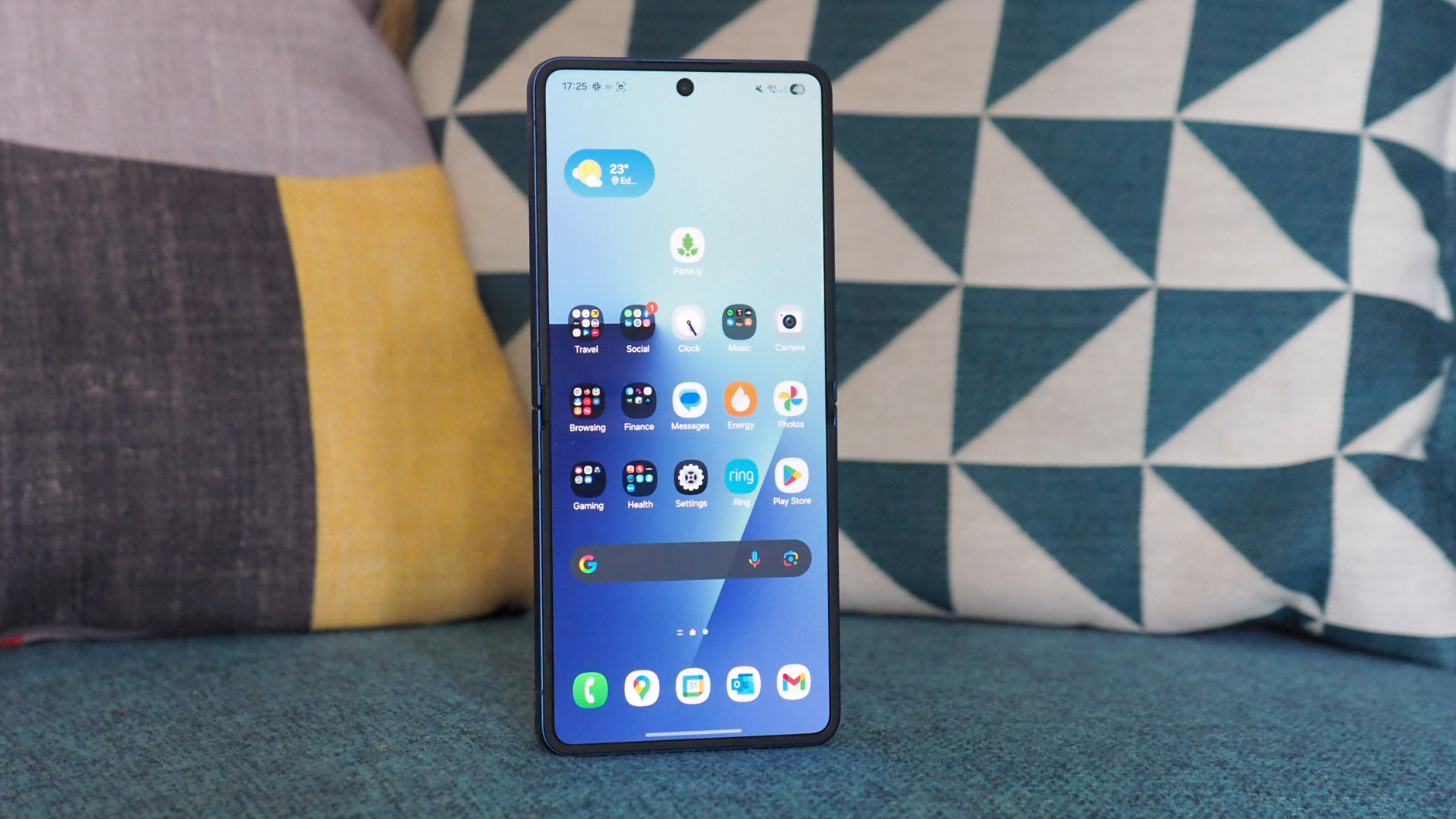
Samsung has been spoiling us with thin handsets of late, from the Galaxy S25 Edge, to the Galaxy Z Fold 7's mere 4.2mm unfolded measurement. So prior to its reveal, I was wondering if the Z Flip series would follow suit.
Short answer: no, it hasn't. But this form-factor is still akin to one of the best Android phone flagships; the Z Flip 7 isn't hugely different from a Galaxy S25 Ultra in terms of physical thickness, even if its 21:9 screen aspect ratio when unfolded is a different look and feel.
That new 4.1-inch Flex Window cover display is clearly the star of the show. But, try as I might, I've just not found it to be all that practical. Samsung is restrictive with apps for this display, so while the odd notification has triggered me to unfold the device fully, I've often found myself wanting to do more on the folded device.
I get why Samsung is reluctant, though. A free-for-all app experience on a peculiar aspect ratio that's partially blocked by a duo of cameras isn't going to work for all scenarios. But its main rival, Motorola's Razr, does permit much more to be done on its screens – and that's what I'm left longing for with this Z Flip 7.
As a result, I've found myself rarely using that exterior display – certainly less than I'd expected anyway. Instead, the unflipped position has become more my norm, sometimes even slipping the phone back into my pocket as such, without folding it back up.
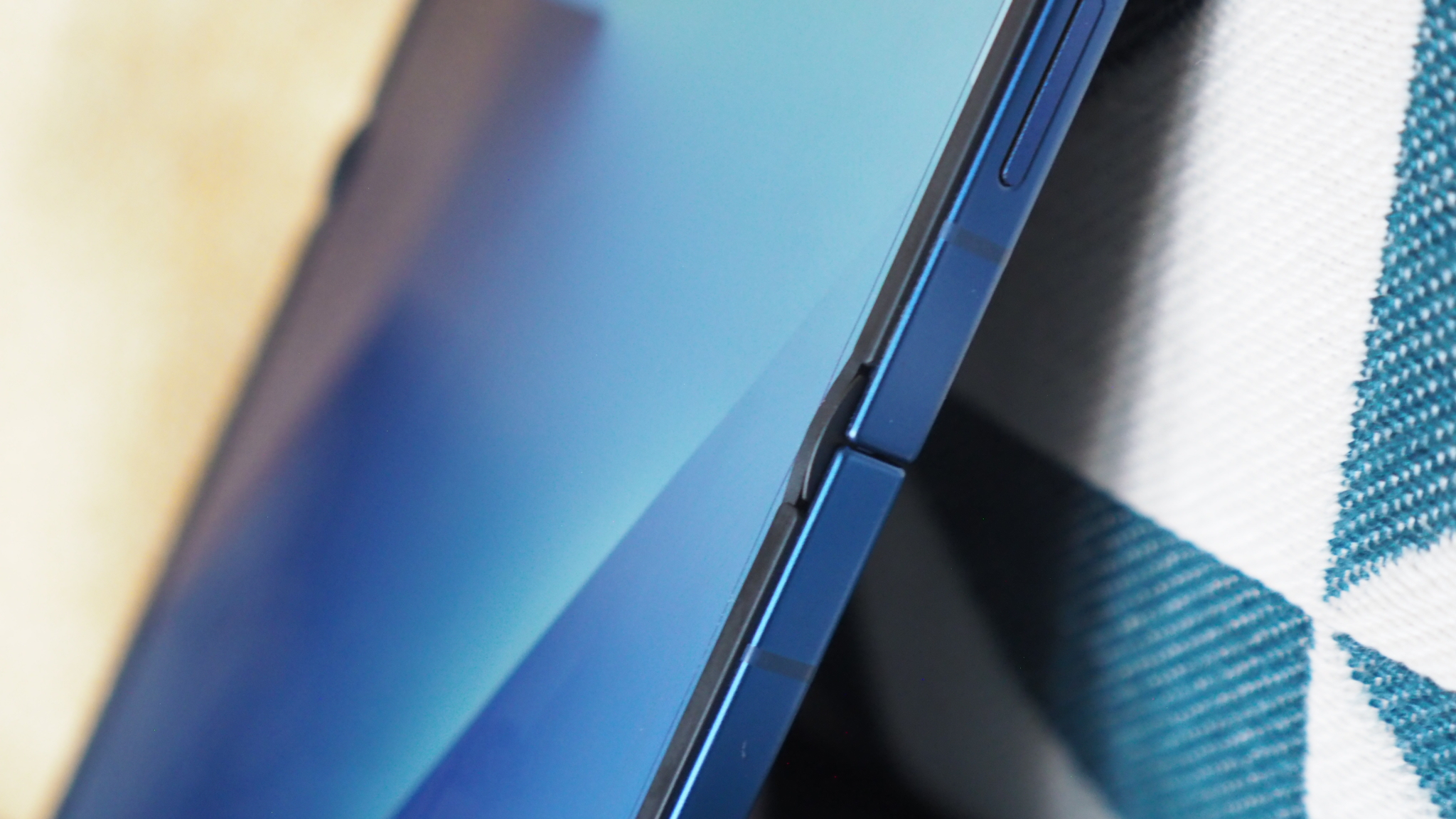
But there's a bit of a problem: I just find the inherent quality of the folding panel's coating to be too much of a magnet for fingerprint smears and, when in sunlight, this creates a reflective experience that sometimes feels like a compromise.
And while the FlexArmor Hinge has been reduced by 30% – again, the top re-engineering brains have done a great job – the hinge's central part, present left and right in the unfolded handset, protrudes beyond the flat screen. In an Android device where gesture controls are key for navigation, I've also found this to be irksome, often catching the hinge and disrupting my control.
While using the larger Z Fold 7 model, I've been able to use the foldable in 21:9 form with no compromise (as it's Corning Gorilla Glass Ceramic 2 covered and less reflective), then unfold for the giant 6:5 aspect ratio to enhance certain experiences. The Z Flip 7's limited external display and reflective internal display don't, for me, add up to an ideal experience by comparison to that.
Performance & Battery
- Samsung Exynos 2500, 12GB RAM
- 4300mAh battery, 25W wired charging, 15W wireless
- Google Android 16 with Samsung One UI 8 and Galaxy AI features
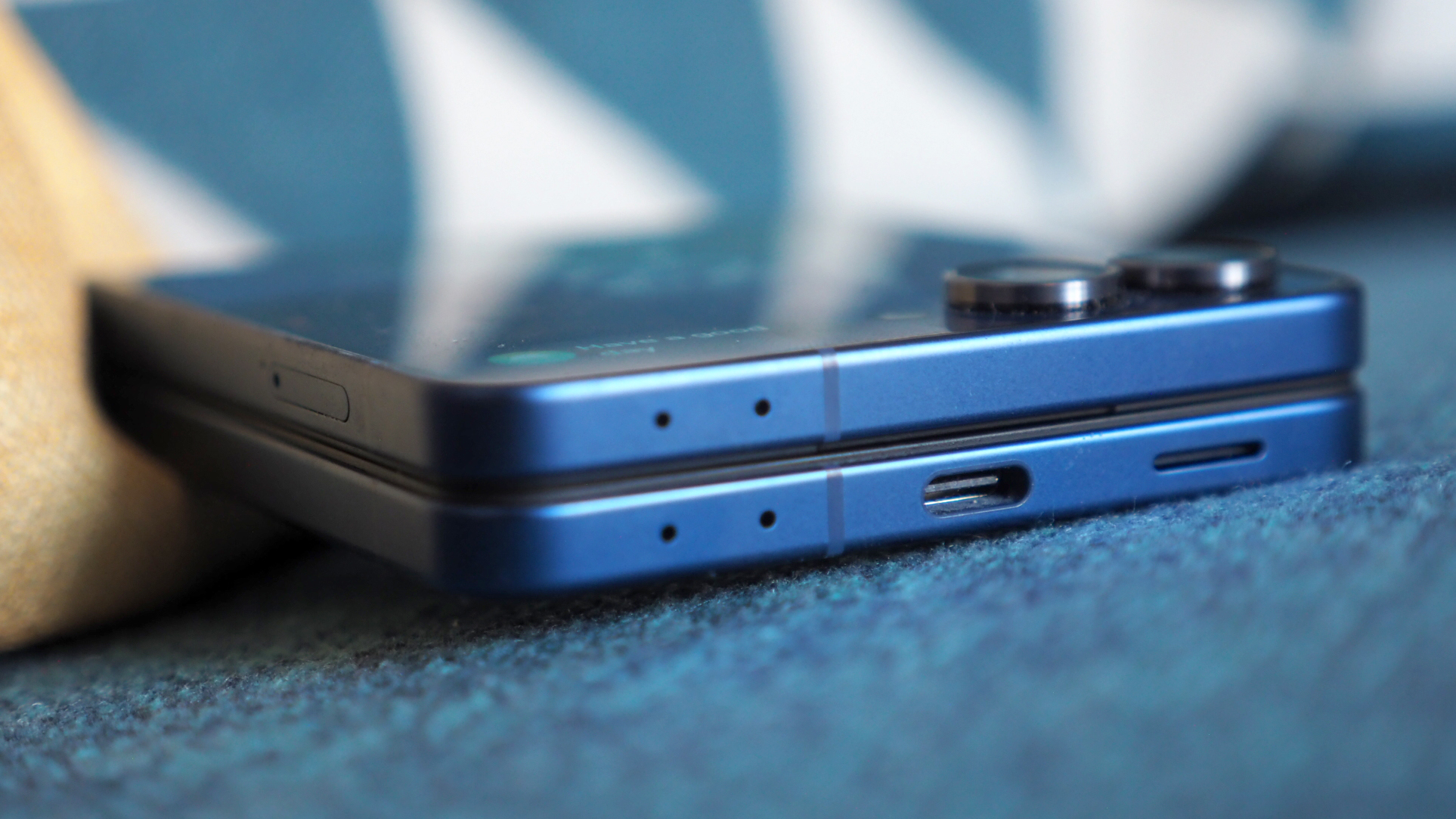
When I found out that Samsung was using Exynos for its Z Flip flagship, I was surprised by that choice. Now that I've used the handset as my own for a working week, I'm not disappointed by its performance. But, for context, this 2500 chip isn't a generation-on-generation upgrade for the series – it's technically a step down in performance terms.
I suspect this is the way Samsung has maintained the Z Flip 7's price point without any annual increase, despite considerable hardware upgrades elsewhere. I'd take the bigger screens and more refined design as the upshot, rather than paying more for a Snapdragon chip, though. Pricing is a key important for flip phones – and I still think the asking price needs to come down further to appeal to more people.
While benchmarks position the Z Flip 7 roughly on par with its Z Flip 6 predecessor, in practice, I've found this to be perfectly decent. Whether gaming, multitasking across multiple apps, hotspotting, or just casually working on daily tasks, the overall experience has proven solid for me.
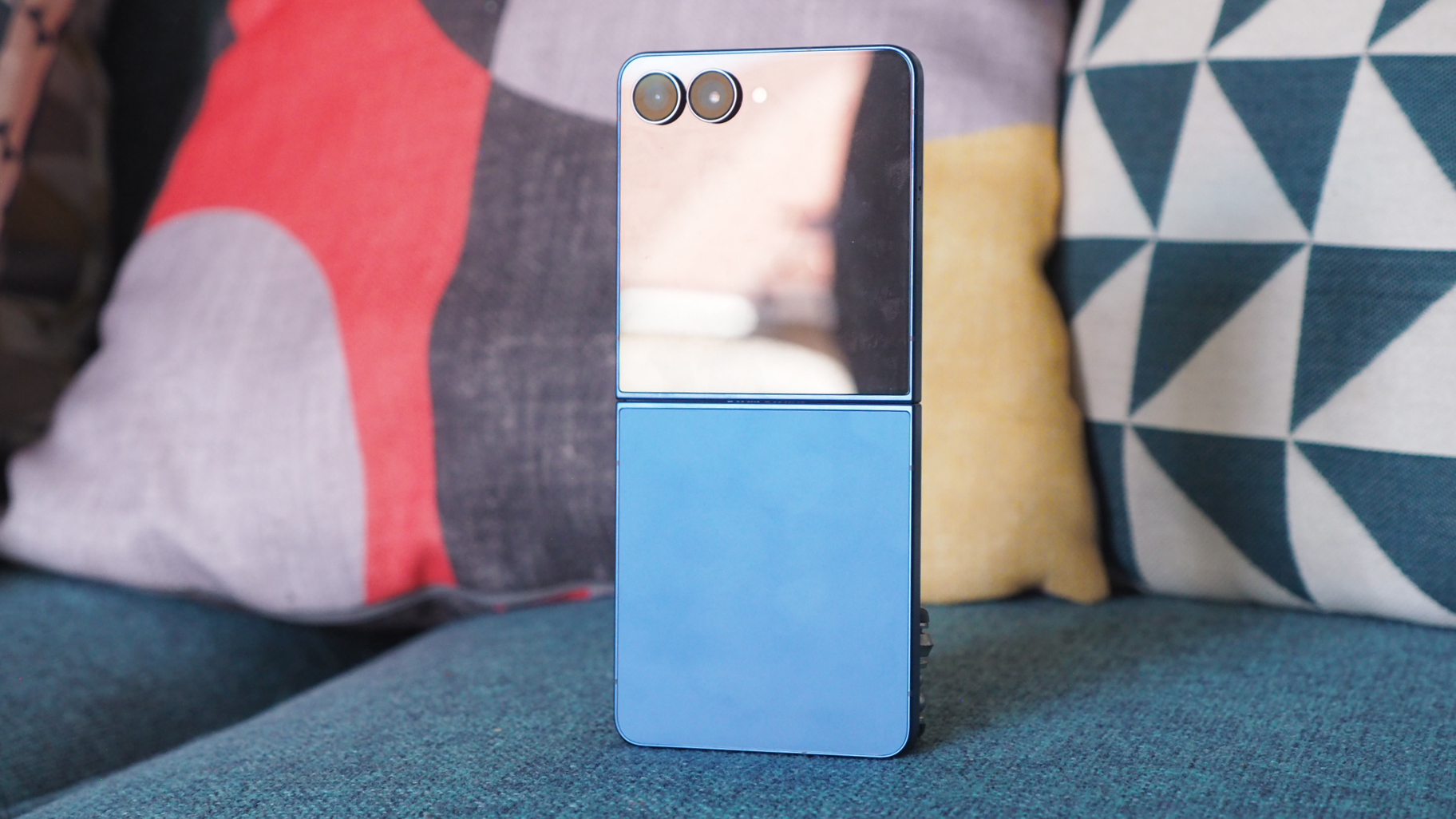
The increase in battery capacity helps with its life, too. Although, again, I've been achieving similar usage times in the Z Flip 7 as with the Z Flip 6. It's heavily dependent on what I'm doing with the device, of course, but on working days I've been getting a projected 16-plus hours of balanced use out of a single charge. That's just about enough to get me through a day.
Example days have seen nearly 5 hours of screen-on time and 4 hours background screen-off operating eat about halfway through the battery's offering. During heavier use, such as at the weekend, 9 hours of screen-on time and 7 hours screen-off was enough to use the full charge – totalling 16 hours. Again, just enough to see me through.
On the software side of things, there are various battery-limiting options available, including per-app management. And I do really enjoy Samsung's overall software experience. The One UI setup is much less cluttered and bloated than many of its key rivals. It's just the lack of wider support for the Flex Window cover display that I find a letdown – something for the Z Flip 8 to further explore, perhaps? I know other users have been asking for it.
Cameras
- Main camera duo:
- 50-megapixel, f/1.8 aperture, optical stabilisation (OIS)
- 12MP ultrawide, f/2.2
- Selfie camera:
- 10MP, f/2.2
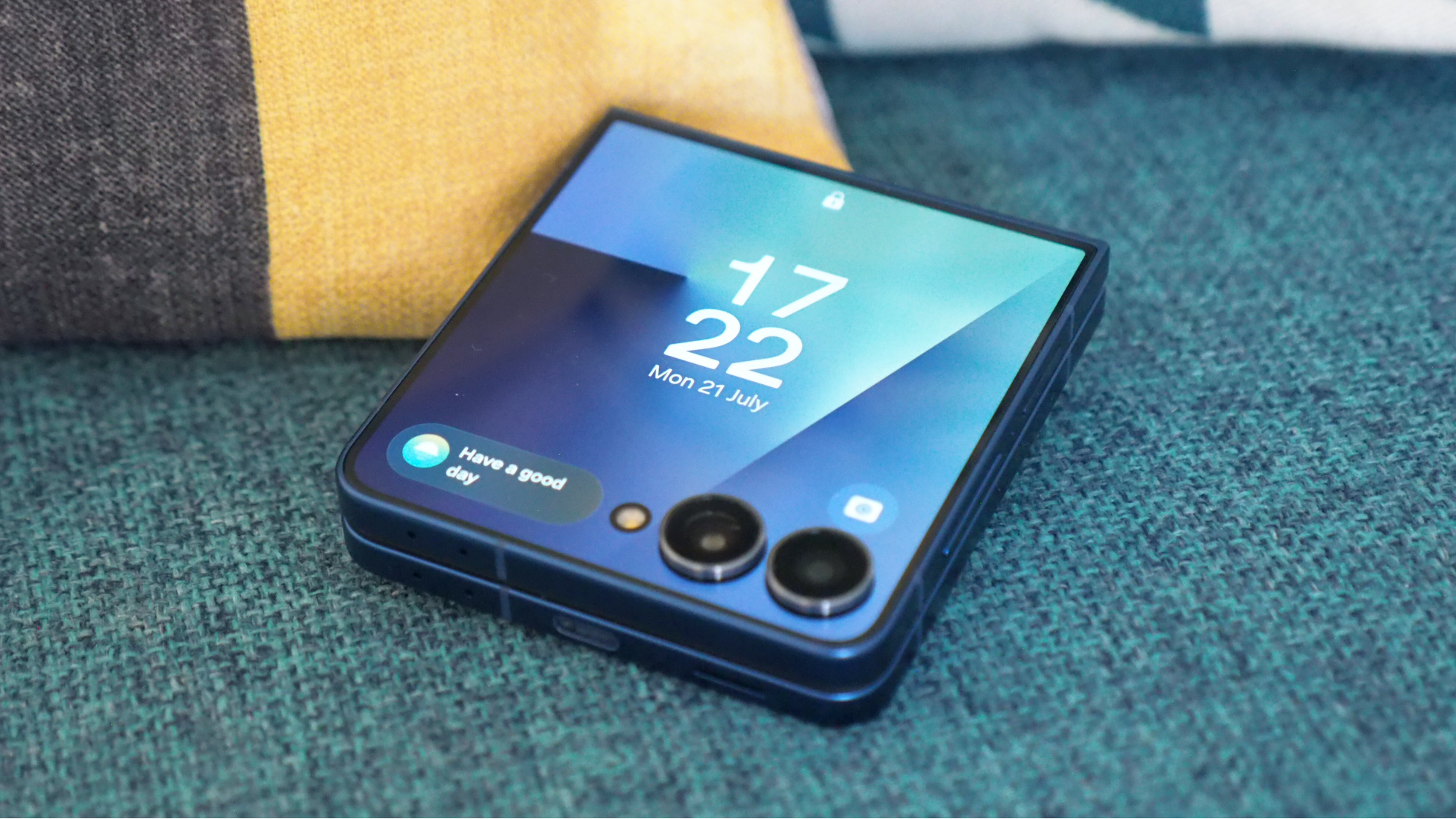
It was the previous Z Flip device that brought its biggest feature upgrade: a more resolute main camera. That continues into the Z Flip 7, too, with a 50-megapixel main and 12MP wide-angle duo living in their usual position on the front.
While that reads as the very same cameras, however, I spoke with Samsung’s Head of Smartphone Product Planning, who confirmed that the Z Flip 7's cameras were "re-engineered from the inside out," creating a significant challenge for the team – whose goal it was to reduce bulk in every instance of the device, to permit the larger battery capacity.
In terms of results, therefore, the Z Flip 6 and Z Flip 7 are very similar – but not identical. The main lens is great in various conditions, including low-light scenarios, thanks to Samsung's Night Mode. The wide-angle isn't quite as accomplished in terms of sharpness, though, and zoom is dependent on digital only rather than anything more – so quickly reaches its limits.
Zoom lenses aren't commonplace in flip-type phones, though, with the Motorola Razr 50 Ultra boasting one rare example of a 2x zoom lens. Its replacement, the 60 Ultra, however, ultimately ditches that for a wide-angle instead. So Samsung is absolutely on competitive terms in that regard here.
Verdict
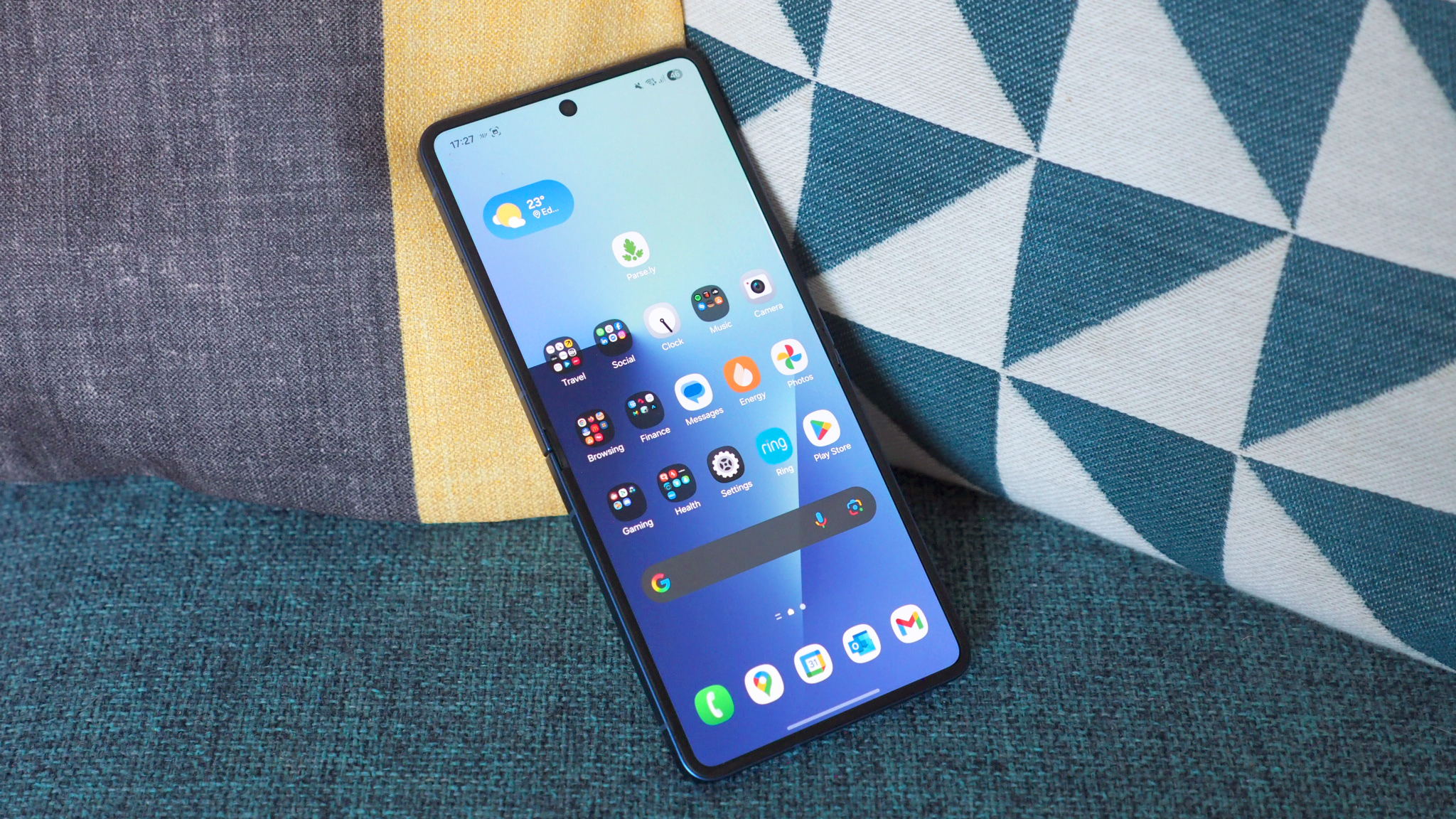
The Galaxy Z Flip 7 represents a seismic shift in Samsung's hardware development for its flip phone flagship. That all-encompassing Flex Window cover display looks like an absolute dream, establishing the brand at the top of its game in this market.
That said, however, I've not found the app-limited use of the Flex Window to be all that practical, typically defaulting to the new-and-improved main display – and loving the flip action in doing so – but finding its reflective qualities to be a step below a non-folding staple flagship.
As flip phones go, however, the Z Flip 7 is at the very top of its game. It flips off its key competition by matching or exceeding its peers in all the key departments. Samsung's re-engineering of every aspect of this phone is exactly what was needed to assert its dominance in this market. But it still might not be for everyone.
Also consider
If price is a big barrier, then the smaller-screened Z Flip 6 is heavily discounted and could be a good first option to test the waters of flip phones for you.
Otherwise, Motorola's Razr 60 Ultra is the most obvious flagship competitor, with similar specifications at a similar price, but with more raw power and greater battery capacity on offer.

Mike is T3's Tech Editor. He's been writing about consumer technology for 15 years and his beat covers phones – of which he's seen hundreds of handsets over the years – laptops, gaming, TV & audio, and more. There's little consumer tech he's not had a hand at trying, and with extensive commissioning and editing experience, he knows the industry inside out. As the former Reviews Editor at Pocket-lint for 10 years where he furthered his knowledge and expertise, whilst writing about literally thousands of products, he's also provided work for publications such as Wired, The Guardian, Metro, and more.
You must confirm your public display name before commenting
Please logout and then login again, you will then be prompted to enter your display name.
